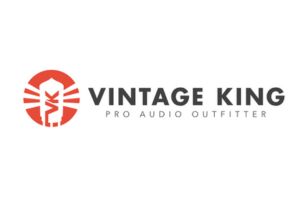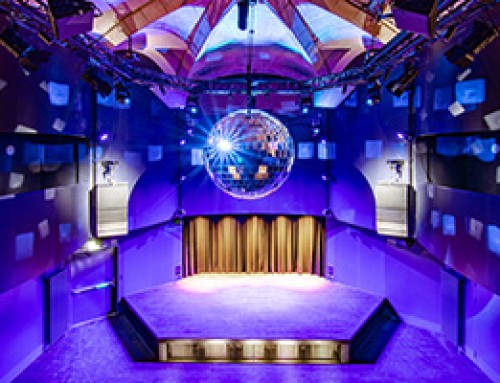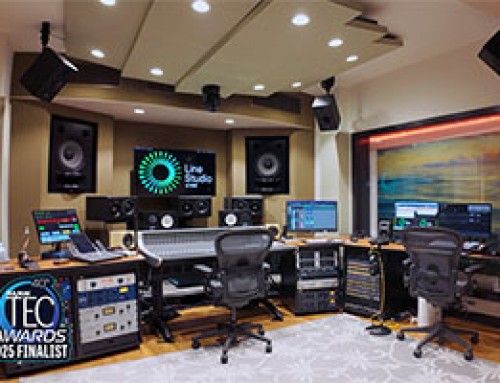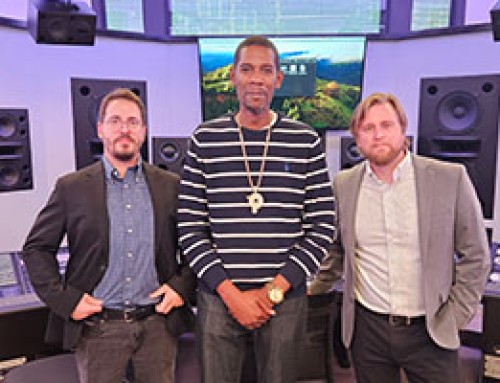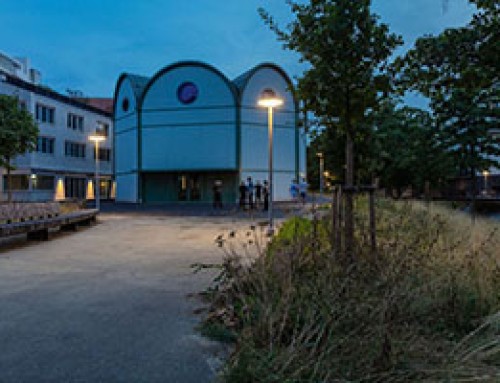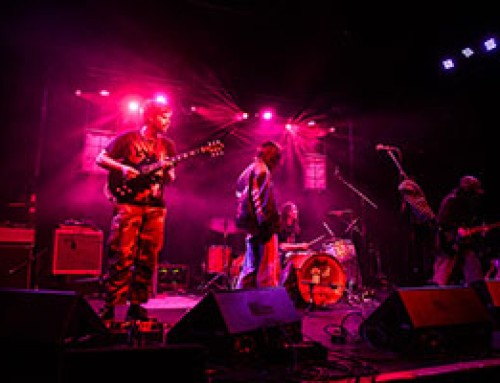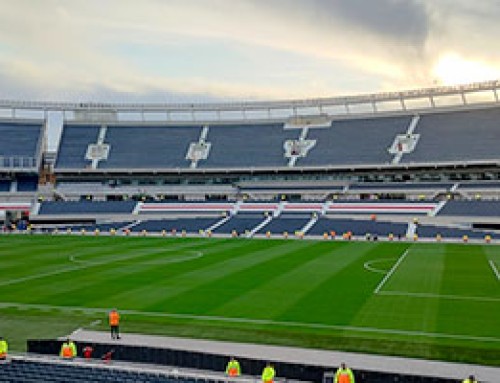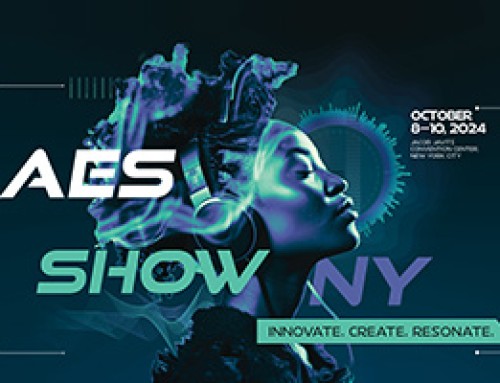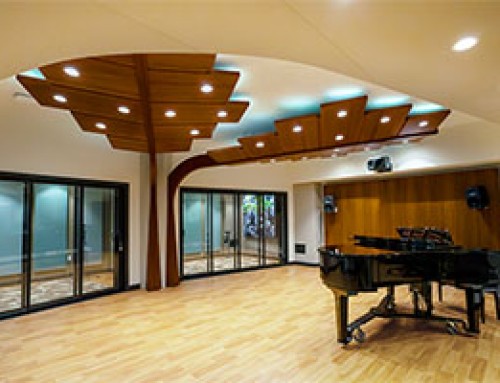Producer/musician/engineer Bill Jabr describes himself as a “studio nerd” and looking back on his career thus far, it’s clear to see why. He founded the original Blue Room in his home city of Atlanta, Georgia, in 2009 and the studio quickly became the creative space of choice for some of music’s hottest names, like André 3000, James Blake, Juice WRLD, Travis Scott, Foster The People, Summer Walker and Ari Lennox, to name a few.
In 2014, Bill and his team expanded to Los Angeles, where they quickly became known for their meticulous work ethic and Southern hospitality. They now run Lion Share Studios, a historic L.A. facility that has previously hosted legends like Michael Jackson, Celine Dion, Eric Clapton, Earth, Wind & Fire and Donna Summer, and is on track to keeping that great legacy alive.
When it comes to the future of recording studios, Bill is 100% optimistic and he tells us why in this recent interview. Read on to find out about how he set up a real grassroots studio in his hometown, how Vintage King helped connect him with an important contributor to his studio, and the exciting new project he’s working on that demonstrates his belief in the studio business.
Since we last spoke to you, you’ve expanded the Blue Room Studios family. Give us an update.
It’s been an interesting year for both of our studios. The original Blue Room in Atlanta is our home base–those are our roots, and that’s a big part of who we are. We have a great team over there currently, as far as engineers and producers go; they work together and really run that ship. The studio has hosted artists from all over the world and it continues to thrive.
More recently, at the end of 2022, we got an opportunity to take over Lion Share Studios, which is what I would consider an iconic Los Angeles room. Lion Share was originally built by Kenny Rogers and Terry Williams in the late ‘70s and our team was completely blown away by the history and vibe of the space and connected with it instantly. The original designer, Carl Yanchar, worked with us to help restore the room and gave us his blessing as we attempted to bring back something that we felt was truly special in the studio world. Since the opening of Lion Share, we’ve been booked around the clock.
At the same time, we have a new WSDG-designed studio coming to Atlanta that’s currently in construction, where we’re working on making today’s version of a classic studio. And then in L.A., we’re bringing back and re-imagining a forgotten classic room. Both are different types of projects, but it’s very exciting and inspiring.
You’ve always stated that you’re very artist-centric as a studio–tell us what it takes to provide a great studio experience for an artist.
Beyond being studio engineers, we’re obsessed with service and in that regard, we think of ourselves more like the Four Seasons Hotel than maybe a recording studio. [Laughs] Everything we do is focused on enhancing the artist’s process, whether that means being more involved or even less involved. Some artists are very private and we’re very sensitive to that; some artists need more attention and we’re very sensitive to that, too. So it’s those details that we are really focused on. Our goal is to give artists so much of a service experience that they can truly forget about any distractions around them and just focus on creating.
We’re also just pure studio nerds–we do a lot of things in-house; we do a lot of our own wiring, design our workflow, I tune and configure the main monitor systems in our room and am constantly doing maintenance, down to even the room doors! We’re very meticulous so when you come to the studio you know that you’re going to be in a really great-sounding room with great playback and great gear. I think that’s been able to attract some artists that I’m personally a fan of–artists that I feel are really pushing the sonics and that’s always exciting.
The interior aesthetics and designs of our spaces are equally as important to me. I believe that the importance of a studio vibe happens not only through the audible experience but equally as much through the visuals and vibe of the space. We want to be a part of beautiful spaces all around!
How did you first become aware of Vintage King and what was your first experience working with us?
We first started going to Vintage King when we felt like we were growing past what was a consumer level. We said, “Okay, now that we’re turning into a professional studio, we need to go to Vintage King.” To me, Vintage King is synonymous with professional audio and the willingness to make bigger purchases and start buying things that are above consumer grade.
I know that you guys sell consumer-grade gear as well, but I just felt like with us, when we were starting to look at buying vintage Neves or consoles or things like that, Vintage King was one of the places that you would trust to do that type of thing. You’re dealing with bigger purchases and you want to have someone you can trust, someone who will be there for you, and Vintage King was that for us, and for the industry as a whole, I would say.
What are some of your favorite pieces of gear that you have purchased from Vintage King?
The API 2448 console was one of our biggest purchases from Vintage King and we just love the console. We’ve had it for three years now, but it’s already a workhorse for us in so many ways. I bought a vintage Neve 1066 from you several years ago, which I thought was kind of crazy at the time–it was $6,000 or something and I couldn’t believe I was paying that for one channel of Neve, but it was the original Marinair transformers. I always get comments on it and it’s been an amazing pre, it sounds great, it’s been flawless and we’ve never had any issue with it–I want to say it’s probably worth a lot more now than when we bought it even. There’s also the Maselec EQ that we bought when we started picking up on the mastering side–that’s definitely been one of our favorite pieces as well.
So yeah, everything from modern classics like the Maselec to the vintage Neve to the API, those are our favorites. I’m completely paranoid about buying a vintage mic or vintage gear anywhere, so Vintage King is the one place I would consider because I know that you guys are meticulous and have a reputation for quality and transparency with stuff like that.
How has Vintage King helped you with gear selection, purchasing, and servicing in the past?
On the service side–beyond being helpful and giving me information about the things I was purchasing–I have had a unique experience where Chris Karn, my previous Vintage King sales associate, actually connected me with a local luthier named Pavel Maslowiec who builds guitars in Los Angeles. That’s been an amazing relationship! Pavel does so much of the custom carpentry in our rooms now; he was able to rebuild a whole speaker system based on the designs I sent him. Those are the types of people you need when you’re doing this; special people that have those types of skills and know music too. So Vintage King has been a resource beyond even just selling gear and things like that–they’ve actually connected us with people from the community whom we’ve worked with since and that has helped us grow our studio in different ways.
What sets Vintage King apart from other pro audio gear companies?
I think their reputation sets them apart–our experiences with them, just on a trust level, have been better than other pro audio companies. Like I said, they’re just synonymous with pro audio and they’re helpful, knowledgeable, and always easy to talk to and get help from.
What sets your studios apart from other recording spaces?
I think we’re constantly re-investing into the space, whether it be new gear, new rooms, or just little details. It’s about improving our service, improving the sound of the space, improving the way things feel, and maintaining things. What a lot of studios did in the past, I feel, is take a great space and just ride it out and hang on–you see old facilities where consoles and gear have been neglected and the speaker playback doesn’t sound like it once did. A lot of the owners have become a little bit jaded over time because of the changes in the industry and feeling like no one cares anymore.
I refuse to take that view because in my opinion, maybe 95% of the people won’t care as much as we do but it’s that 5% that are the artists that make the magic, and those are the artists that I feel like we’ve been able to get–those real special, unique artists that don’t march to the same beat as everyone else. We just really believe in what we’re doing and we’re trying to make the best studio we possibly can. It has evolved through relationships, working closely with the engineers, and creating the culture. Every time we would be at a point where we had an opportunity to expand and grow, we would try to jump at things when we could and that leads us to now.
How has the industry changed since you first opened your doors and how has your studio adapted to those changes?
When I was just starting, in Atlanta, some of the veteran studio owners in the area were like, “You know, you’re crazy. What are you doing? This is a failing business model.” And even today, everyone’s like, “You’re crazy, what are you doing? It’s a failing business model.” [Laughs] The industry has changed a lot but I think there’s a good future for studios. I think studios are never going to go away, but they are changing, and change happens to all industries. We’ve had major changes in the music industry in the last 30 years–going from tape to digital to illegal downloads and now to streaming but the industry appears to have a stable path moving forward with streaming and with subscription music now.
I think that technology has been great for music. It’s amazing that some of the artists that we work with are from different parts of the world; I think it’s incredible that streaming is making the world smaller, so if you’re in Argentina, or Egypt, for example, you can reach people without having to get major distribution or trying to figure out how to get your compact disc to a store in New York–you now have a voice that can reach the whole world.
The music industry has plenty of challenges, but I’m not a doomsday person. I think people will need studios for years, I just think it’s going to be a different type of studio. There’s all this talk about how artists can make albums in their bedroom, but they’ve always been able to do that–Sly Stone did that in the ‘70s! You can always do that and the quality of laptops, the conversion, the interface–everything sounds better. But the one thing that will always be different about the studio is that when you’re collaborating with artists, you’re getting up, going outside, getting the service experience, and hopefully getting a room that sounds better than anything you’ll be able to build at your house, just due to the infrastructure of rooms like these. I think there’s always going to be a need for that and I definitely think the music industry seems to be back on track for growth overall.
When we first started the studio, it was right around 2009, and it looked really grim for the music industry–it was not exciting. We used to say, “Man, I wish we came up in the ‘90s” and we’re hopefully, knock on wood, heading back towards an era that shows more promise. We’ve seen the studio budgets for artists get bigger–five or so years ago, they were cutting back on budgets and the mid-budget artists weren’t able to get in a lot of the bigger studios. We’re now seeing a lot more of that investment from the labels–I see it going in the right direction and I’m pretty optimistic.
Looking back, what are you most proud of or excited about in terms of your studio’s history?
The music is a great icing on the cake–to hear the songs and the albums that have come out of the studio–but beyond that, I’m always most proud of the team that we have and the close relationships I’ve been able to build over the years with the crew at the studio. I’ve been most proud of seeing them develop on their own journeys, whether it be as engineers or with their families. It’s just really cool to have a team and be able to do things with them–that’s what I’m most proud of in the end. I look back and appreciate that part of the journey the most, it’s just cool and we support each other a lot.
We have younger engineers that are on the cusp and trying to prove themselves and it’s always exciting to see them break through and get connected with that first artist that just really locks in with them, starts doing some big work with them, and then they get going. It’s really exciting to see that and I’ve been so proud of all the amazing engineers and all the talent that’s come through our studio over the years, whether they’re still with us or they’ve gone on to work with artists all around the world. That to me is a testament to our team, on all levels–it’s not just their skill but also their character and I’m definitely most proud of that.
When I first set up a studio, I’d never, in a million years, have imagined some of the artists that I consider icons walking through the doors of our studios. It’s still like a dream and I don’t take it for granted at all. We never act like we made it or we deserve it or anything, we’re just very grateful.
What are your plans for the future of your studios?
We just re-launched Lion Share–it’s been going really well and we’re just about to break ground on the second room that we have over here, which will, hopefully, open in September or October.
The biggest project is the new Atlanta studio that I’m working on with WSDG’s Will Brown and John Storyk–that’s been a few years coming and I think it’s one of the most unique combinations for a studio. It’s a combination of John and his team, which has 50-plus years of experience, and then Santos Perez, who I’d like to mention. Santos has built some of the most legendary studios in Atlanta; he’s been building rooms for 15 years, is a complete veteran in this field, and contractors don’t always get their due like the designers do but he’s an amazing veteran with amazing skill. And then there’s our team. We’re not coming into this studio with some big investor; the studio is paying for a studio, which, sadly to say, you don’t hear of as much–there’s usually a big artist with a lot of money or some investor or some big company behind it.
This is a real grassroots, independent studio, and the team is a meeting of the minds between our experience of doing this for over 10 years, servicing artists at the highest level, configuring the rooms and the whole vision of the design and the workflow and even the layout of the building–I mean, I’m biased, but I think it’s next to none. I don’t think there’s any other team that can meet on three levels with this much experience behind them to execute a project like this. Usually, you’re going to have someone that maybe hasn’t run a studio that long going to the big studio designer and that’s great too, but you’re going to miss things that a person knowing the studio would think about, in terms of the facility. Then a lot of times it’s so hard to find a great contractor like Santos, so it’s just a dream team. I know how these things come together and I don’t think there’s been anything like this for a long time. The new Atlanta facility is going to be a very special space so that’s the thing I’m most excited about for 2024.
We’re always pushing to learn more and try different things and try to improve. We’re never satisfied and probably never will be. [Laughs] But that’s the fun part, that’s the journey and what makes it fun is all those battles every day of trying to figure things out.

